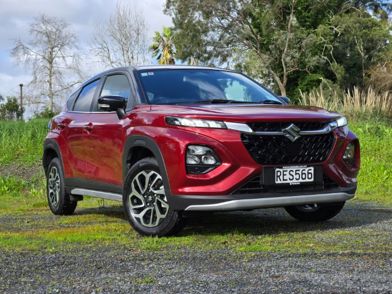Keeping kids safe is one of the main priorities for parents. But choosing the right car seat can be a daunting task. There are so many options and accessories and add-ons and safety features and it can be pretty overwhelming. So, let’s break it down.
What type of car seat does my child need, and when?
As your child grows and develops, it’s important they are in an approved child restraint that is appropriate.
These child restraints include baby capsules, car seats, booster seats, and child safety harnesses. Each brand will have slightly different age and weight requirements for their specific seats, but here are some guidelines.
Baby capsules
A baby capsule is typically the first seat a newborn will use, right from their first ride home from the hospital.
These seats are rear-facing only, and babies can fit into them until they’re 13-15kg (6-12 months), depending on which seat you get.
For example, the weight limit of our capsule is 13kg, but we moved our baby into a larger-size car seat well before this, as he was getting increasingly uncomfortable in the tight space. So, while each car seat may say it can fit a child up to a certain weight or age, keep in mind that you may end up moving your child before, or after, this.
Convertible car seats
This type of car seat can be rear-facing, before converting to forward-facing when the child is ready. They can be used from newborn instead of a capsule, and can fit a child until 18-30kg (4-6 years). Again, it depends on which brand you purchase.
It’s best practice in New Zealand to have the child rear-facing for as long as possible, to 2 years or older. The length of time you can have your convertible car seat in a rear-facing position will vary depending on the seat.
All-in-one car seats
These car seats can go from birth to booster. But there are catches, like price, size and suitability. Plus, a second seat for subsequent children could mean the children progress through sequentially.
All-in-one seats can be rear-facing and forward-facing before converting to a booster seat. Again, you want to ensure your child is in a rear-facing position for as long as possible, and this will depend on which seat you purchase.
These seats can go from birth to 45-55kg, or 6-8 years.
Booster seats
There are different types of booster seats, so they can get a bit confusing. But basically, you can get harnessed booster seats or non-harnessed booster seats.
Harnessed booster seats can typically fit a child from 9-36kg-plus (9 months to 8-plus years). But it’s best practice in New Zealand not to move your child into one of these seats until at least two years, because they don’t rear face.
These typically can convert to non-harnessed seats, and sometimes become half-boosters too.
Non-harnessed booster seats can go from 15-18kg to 36kg-plus (4-8 years).
Some can become half-boosters too for older kids. All booster seats are forward-facing only.
When is my child ready to move out of a car seat?
Kiwi kids must be in an appropriate child restraint until the age of 7.
Between the ages of 7 and 8, every child in NZ must be in an appropriate child restraint, if there is one in the vehicle. After 8, the child is no longer required by law to use a child restraint.
The problem with this is many children between 7 and 8 (and sometimes even older), aren’t actually tall enough to be properly restrained by a seatbelt alone.
This is because the seatbelt still won’t safely fit across a child’s shoulder and hips until they’re 148cm tall.
Until then, it’s best practice for them to remain in a booster seat. In some cases, this won’t be until they’re 10 or 11.
The golden rule of child car seats is that there is no golden rule. It’s down to age, size, weight and comfort.
Err on the side of caution and don’t be too eager to jump ahead too quickly, for the sake and safety of the child.




